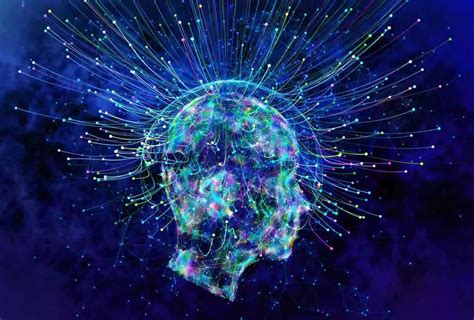As our understanding of the human brain continues to advance, so does our understanding of human consciousness. In recent years, neuroscience has played a crucial role in unraveling the mysteries of conscious experience. In this blog post, we’ll explore the fascinating intersection between neuroscience and human consciousness, delving into the key theories and findings that have shed light on this complex and enigmatic phenomenon.
We’ll start by examining the neuroscience behind human consciousness, diving into the intricate connections between the brain and conscious awareness. From there, we’ll explore the various theories in neuroscience that seek to explain the mechanisms underlying consciousness and examine the neural correlates of consciousness that have been uncovered through brain imaging techniques. Additionally, we’ll investigate the role of neurotransmitters and neuroplasticity in shaping conscious experience and ponder the future of understanding human consciousness through the lens of neuroscience. Join us on this captivating journey as we unravel the intricate relationship between the brain and human consciousness.
Table of Contents
The neuroscience behind human consciousness
Human consciousness, a complex and enigmatic phenomenon, has long been the subject of fascination and intense scientific inquiry. In recent years, neuroscience has made significant strides in unraveling the intricate workings of the brain and its role in generating consciousness.
One of the key areas of focus in understanding the neuroscience behind human consciousness lies in investigating the neural correlates of conscious experience. This involves identifying the specific patterns of neural activity and connectivity that are associated with different states of consciousness, such as wakefulness, sleep, and altered states of consciousness.
Advancements in brain imaging techniques, such as functional magnetic resonance imaging (fMRI) and electroencephalography (EEG), have significantly contributed to our understanding of the neural basis of consciousness. These tools allow researchers to directly observe and analyze the brain’s activity as individuals engage in various cognitive tasks or experience different states of consciousness.
Furthermore, the role of neurotransmitters in shaping conscious experience has emerged as a crucial area of study in neuroscience. Neurotransmitters, chemical messengers that facilitate communication between neurons, play a vital role in modulating attention, arousal, and mood, all of which are essential components of conscious experience.
Exploring the connection between the brain and consciousness
Understanding the connection between the brain and consciousness is a fundamental question in neuroscience. Consciousness is the state of being aware of and able to perceive one’s surroundings, thoughts, and emotions, while the brain is the control center of the central nervous system, responsible for processing and interpreting information from the environment. Exploring how these two entities are connected is essential for unraveling the mysteries of human cognition and experience.
One key area of study is the investigation of neural correlates of consciousness – identifying specific neural activities that are associated with different conscious experiences. Researchers use various brain imaging techniques such as functional magnetic resonance imaging (fMRI) and electroencephalography (EEG) to observe the brain activity correlated with different states of consciousness. Through these studies, scientists have been able to uncover patterns of brain activity that are linked to different aspects of consciousness, such as perception, attention, and self-awareness.
Additionally, the role of neurotransmitters in shaping conscious experience is a topic of interest in neuroscience. Neurotransmitters are chemicals that transmit signals between nerve cells in the brain, and they play a crucial role in regulating various cognitive functions. For example, the release of neurotransmitters such as serotonin and dopamine is associated with mood regulation and emotional experiences, demonstrating the intricate connection between brain chemistry and conscious perception.
As our understanding of the neuroplasticity – the brain’s ability to reorganize and form new connections – grows, researchers are also exploring how this phenomenon influences conscious perception. Studies have shown that changes in brain structure and function as a result of learning and experience can impact conscious awareness and behavior, highlighting the dynamic relationship between the brain and consciousness.
Key theories in neuroscience explaining consciousness
One of the key theories in neuroscience that seeks to explain consciousness is the Integrated Information Theory (IIT). According to this theory, consciousness arises from the integrated functions of the brain, where complex networks of neurons generate a rich repertoire of possible states. This idea suggests that consciousness is not just the result of individual neuronal firing, but rather emerges from the collective activity of interconnected neural networks.
Another important theory is the Global Workspace Theory (GWT), which posits that consciousness arises from the global broadcast of information within the brain. In this view, specific brain regions act as a workspace where information from various sensory modalities, memories, and cognitive processes is integrated and made available to different parts of the brain. This theory suggests that consciousness involves the global dissemination of information for widespread access across the brain.
Additionally, the Predictive Processing Theory (PPT) suggests that the brain functions as a prediction machine, constantly generating hypotheses about the causes of sensory inputs and updating these predictions based on incoming information. According to this theory, consciousness emerges from the brain’s ability to predict and anticipate the environment, integrating sensory data with internal models to generate conscious experiences.
Lastly, the Orchestrated Objective Reduction (Orch-OR) theory proposes that consciousness is linked to the quantum processes occurring in microtubules within neurons. This controversial theory suggests that quantum computations within microtubules contribute to the emergence of consciousness, leading to highly complex and interconnected patterns of brain activity that give rise to conscious experiences.
Neural correlates of consciousness: What do we know?
One of the most intriguing questions in the field of neuroscience is the exploration of the neural correlates of consciousness. This area of study seeks to uncover the specific brain mechanisms and processes that give rise to conscious experiences and awareness. While the precise nature of consciousness remains largely enigmatic, researchers have made significant strides in identifying the neural structures and activities associated with different states of consciousness.
Through advanced imaging techniques such as functional magnetic resonance imaging (fMRI) and positron emission tomography (PET), scientists have been able to map out the brain regions and networks that are active during various cognitive tasks and states of awareness. These studies have revealed the involvement of widespread cortical and subcortical regions in generating conscious experiences, including the prefrontal cortex, parietal cortex, and thalamus.
Additionally, research on patients with brain injuries or disorders has provided valuable insights into the neural correlates of consciousness. For example, individuals in a vegetative state or experiencing locked-in syndrome exhibit distinct patterns of brain activity that shed light on the neural mechanisms underlying conscious perception, even in the absence of external behavioral responses.
Furthermore, investigations into the role of specific neurotransmitters such as dopamine, serotonin, and acetylcholine have highlighted the influence of chemical signaling pathways on shaping conscious experiences. These findings underscore the complex interplay between neural activity and molecular processes in the manifestation of consciousness.
How brain imaging techniques contribute to consciousness research
Brain imaging techniques such as fMRI, EEG, and PET have revolutionized the field of neuroscience, allowing researchers to gain insight into the neural correlates of consciousness. By using these imaging tools, scientists can observe the brain in action, enabling them to identify patterns of neural activity associated with different states of consciousness.
Functional magnetic resonance imaging (fMRI) is particularly valuable in consciousness research, as it provides detailed images of brain activity by measuring changes in blood flow. This allows scientists to pinpoint specific brain regions that are active during conscious states, shedding light on the neural mechanisms underlying subjective experiences.
Electroencephalography (EEG) is another essential tool for studying consciousness, as it records the electrical activity of the brain. By analyzing the electrical patterns seen in EEG data, researchers can identify neural signatures associated with conscious perception, attention, and awareness.
Positron emission tomography (PET) is yet another brain imaging technique that contributes to consciousness research. PET scans enable scientists to track the distribution of radioactive tracers in the brain, providing information about neurotransmitter activity and metabolic processes. This data is crucial for understanding how changes in neurotransmitter levels can impact conscious experience.
Consciousness as an emergent property of neural activity
Consciousness is a fascinating and complex phenomenon that has puzzled scientists, philosophers, and scholars for centuries. One key theory in neuroscience explaining consciousness is the idea that it is an emergent property of neural activity. This theory suggests that consciousness arises from the collective activity of neurons in the brain, resulting in the emergence of a unified and coherent conscious experience.
Neuroscientists have been exploring the neural correlates of consciousness in an effort to understand the specific brain mechanisms that give rise to conscious awareness. Through brain imaging techniques such as fMRI and EEG, researchers have made significant strides in identifying the brain regions and neural networks involved in supporting conscious experience.
Furthermore, the role of neurotransmitters in shaping conscious experience has been a topic of great interest in neuroscience. Studies have shown that the balance and function of neurotransmitters such as dopamine, serotonin, and acetylcholine play a crucial role in modulating aspects of consciousness, including attention, perception, and mood.
As our understanding of the brain and consciousness continues to evolve, the concept of neuroplasticity – the brain’s ability to reorganize and adapt in response to experiences – has raised intriguing questions about how our conscious perception may be influenced by changes in neural connectivity and function.
The role of neurotransmitters in shaping conscious experience
Neurotransmitters play a crucial role in shaping our conscious experience. These chemical messengers are responsible for transmitting signals between the neurons in our brain, influencing our thoughts, emotions, and behavior. The serotonin neurotransmitter, for example, is known to regulate mood, appetite, and sleep, and has been implicated in conditions such as depression and anxiety. Similarly, dopamine is involved in motivation, reward, and pleasure, and is linked to addictive behaviors. The acetylcholine neurotransmitter is associated with learning, memory, and muscle control, while noradrenaline plays a role in arousal, attention, and stress response.
Furthermore, the balance and function of neurotransmitters can be impacted by various factors, such as genetics, stress, diet, and drug use. For instance, imbalances in serotonin levels have been associated with mood disorders, while disruptions in dopamine signaling are related to conditions like Parkinson’s disease and schizophrenia. Additionally, the use of psychoactive substances, such as antidepressants, stimulants, and psychedelics, can directly influence neurotransmitter activity, leading to alterations in consciousness and perception.
Moreover, the study of neurotransmitters and their impact on conscious experience has significant implications for mental health treatment and pharmacology. By understanding how these chemicals modulate our cognition and emotion, researchers can develop targeted interventions for conditions like depression, anxiety, and addiction. Furthermore, the exploration of neurotransmitter systems may also provide insights into the nature of consciousness itself, shedding light on the biological mechanisms that underlie our subjective awareness and sense of self.
In conclusion, neurotransmitters play a vital role in shaping our conscious experience. From regulating our moods and motivations to influencing our perceptions and cognitive functions, these chemical messengers are integral to our mental and emotional well-being. By unraveling the complexities of neurotransmitter systems, researchers can not only advance our understanding of conscious awareness but also pave the way for innovative therapies and treatments that address the intricate interplay between our brain chemistry and our lived experience.
Investigating altered states of consciousness through neuroscience
Altered states of consciousness have been an intriguing topic in the field of neuroscience, prompting researchers to delve deep into the underlying neural mechanisms that give rise to these altered states.
One key aspect of investigating altered states of consciousness is understanding the role of neurotransmitters in shaping conscious experience. Neurotransmitters such as serotonin, dopamine, and gamma-aminobutyric acid (GABA) play a crucial role in modulating consciousness and can influence an individual’s perception, mood, and cognition.
Moreover, advanced brain imaging techniques such as functional magnetic resonance imaging (fMRI) and electroencephalography (EEG) have provided researchers with valuable insights into the neural correlates of altered states of consciousness. These techniques have allowed scientists to identify distinct patterns of brain activity associated with altered states, shedding light on the neurobiological basis of phenomena such as meditation, hypnosis, and psychedelic experiences.
As our understanding of neuroplasticity continues to advance, researchers are also investigating how changes in brain structure and function may impact conscious perception. The brain’s remarkable ability to reorganize itself in response to experience has raised intriguing questions about the extent to which neuroplasticity influences altered states of consciousness and the potential for harnessing this phenomenon to enhance our understanding of conscious experience.
Does neuroplasticity influence our conscious perception?
Neuroplasticity, the brain’s amazing ability to reorganize itself by forming new neural connections throughout life, has been the focus of much research in the field of neuroscience. But how exactly does neuroplasticity influence our conscious perception?
One key way in which neuroplasticity affects conscious perception is through the process of learning and memory. When we learn new information or skills, the brain undergoes changes in its structure and function. These changes, mediated by neuroplasticity, can result in alterations in our conscious perception of the world around us. For example, someone who has learned to play a musical instrument may develop a heightened awareness of sound and rhythm, influencing their conscious perception of auditory stimuli.
Furthermore, neuroplasticity plays a role in recovery from brain injuries and the adaptation to sensory deprivation. For individuals who have experienced a stroke or trauma to the brain, neuroplasticity allows for the reorganization of neural networks to compensate for damaged areas. This can lead to changes in conscious perception as the brain adapts to new ways of processing information and stimuli.
Overall, the influence of neuroplasticity on conscious perception highlights the dynamic nature of the human brain and the profound impact that environmental and experiential factors can have on shaping our conscious experience.
The future of understanding human consciousness through neuroscience
As we continue to advance in the field of neuroscience, the future of understanding human consciousness looks promising. With the development of new technologies and research methods, we are gaining deeper insights into the intricate workings of the brain and how they relate to conscious experience.
One key area of progress is the use of brain imaging techniques such as fMRI and EEG, which allow us to observe brain activity in real time. This has opened up new possibilities for studying consciousness and its neural correlates, providing valuable data for researchers to analyze.
Furthermore, the emerging field of neuroplasticity is shedding light on how the brain’s ability to reorganize itself may influence conscious perception. Understanding the mechanisms behind neuroplasticity could offer valuable information on how our conscious experiences are shaped and potentially lead to new treatment approaches for various neurological conditions.
Overall, the future of understanding human consciousness through neuroscience holds great potential for advancing our knowledge of the mind and paving the way for innovative applications in fields such as medicine, psychology, and artificial intelligence.





